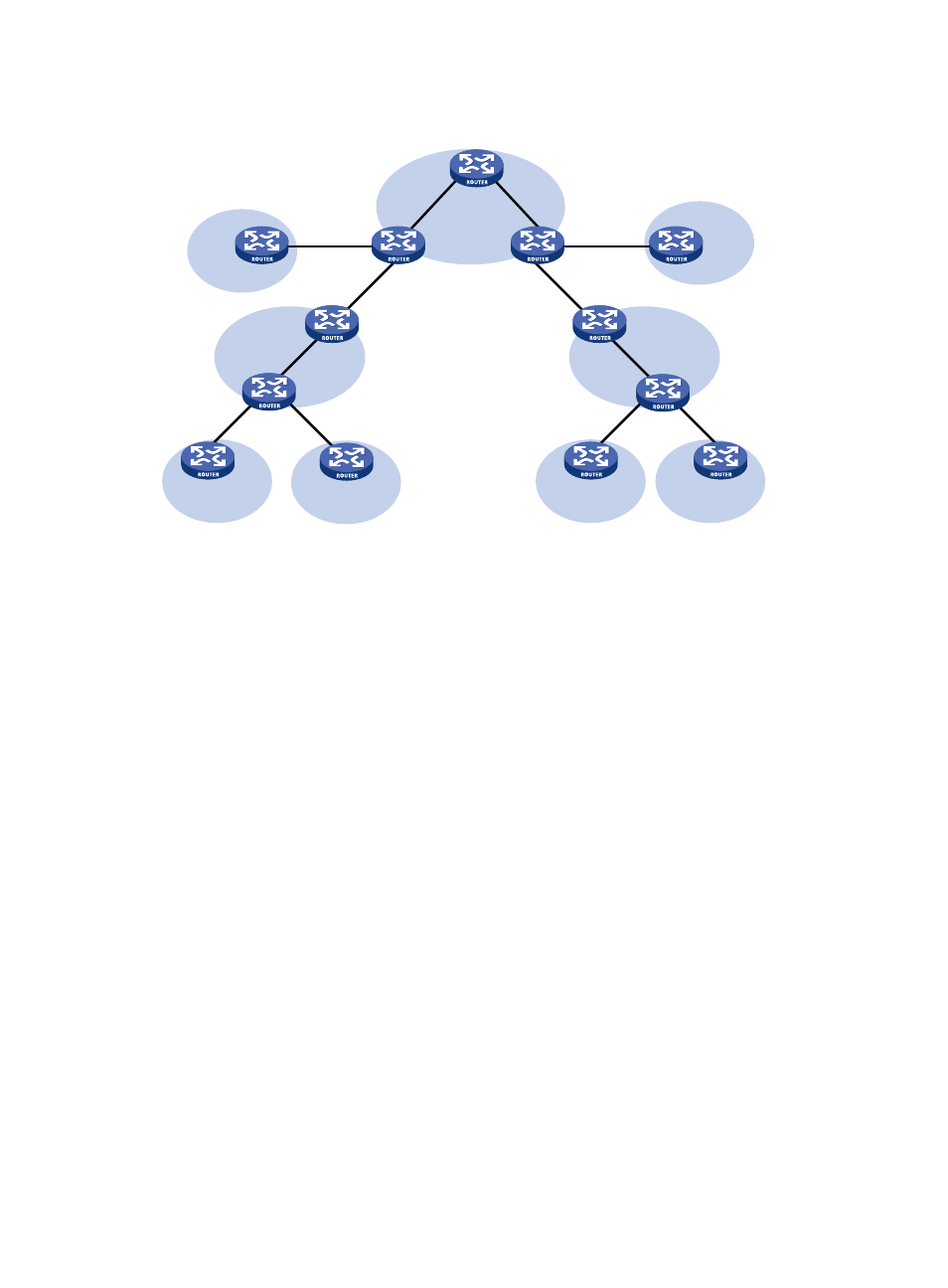Propagation of routing information, Benefits – H3C Technologies H3C S10500 Series Switches User Manual
Page 246

235
Figure 65 Network diagram for nested VPN
Provider PE
CE 3
CE 4
Provider MPLS
VPN backbone
P
VPN 1
VPN 1
VPN 2
CE 7
Provider PE
VPN 2
CE 8
Customer MPLS
VPN network
Customer PE
CE 5
CE 6
VPN 1
VPN 2
Customer MPLS
VPN network
Customer PE
CE 1
CE 2
Propagation of routing information
In a nested VPN network, routing information is propagated in the following process:
1.
A provider PE and its CEs exchange VPNv4 routes, which carry information about users’ internal
VPNs.
2.
After receiving a VPNv4 route, a provider PE keeps the user’s internal VPN information, and
appends the user’s MPLS VPN attributes on the service provider network. That is, it replaces the RD
of the VPNv4 route with the RD of the user’s MPLS VPN on the service provider network and adds
the export route-target (ERT) attribute of the user’s MPLS VPN on the service provider network to the
extended community attribute list of the route. The internal VPN information of the user is
maintained on the provider PE.
3.
The provider PE advertises VPNv4 routes carrying the comprehensive VPN information to the other
PEs of the service provider.
4.
After another provider PE receives the VPNv4 routes, it matches the VPNv4 routes based on its
local VPNs. Each local VPN accepts routes of its own and advertises them to its connected
sub-VPN CEs (such as CE 3 and CE 4, or CE 5 and CE 6 in
). If a CE is connected to a
provider PE through an IPv4 connection, the PE advertises IPv4 routes to the CE. If a CE is
connected to a provider PE through a VPNv4 connection (a user MPLS VPN network), the PE
advertises VPNv4 routes to the CE.
Benefits
The nested VPN technology features the following main benefits:
•
Support for VPN aggregation. It can aggregate a customer’s internal VPNs into one VPN on the
service provider’s MPLS VPN network.
•
Support for both symmetric networking and asymmetric networking. Sites of the same VPN can
have the same number or different numbers of internal VPNs.
•
Support for multiple levels of nesting of internal VPNs.
